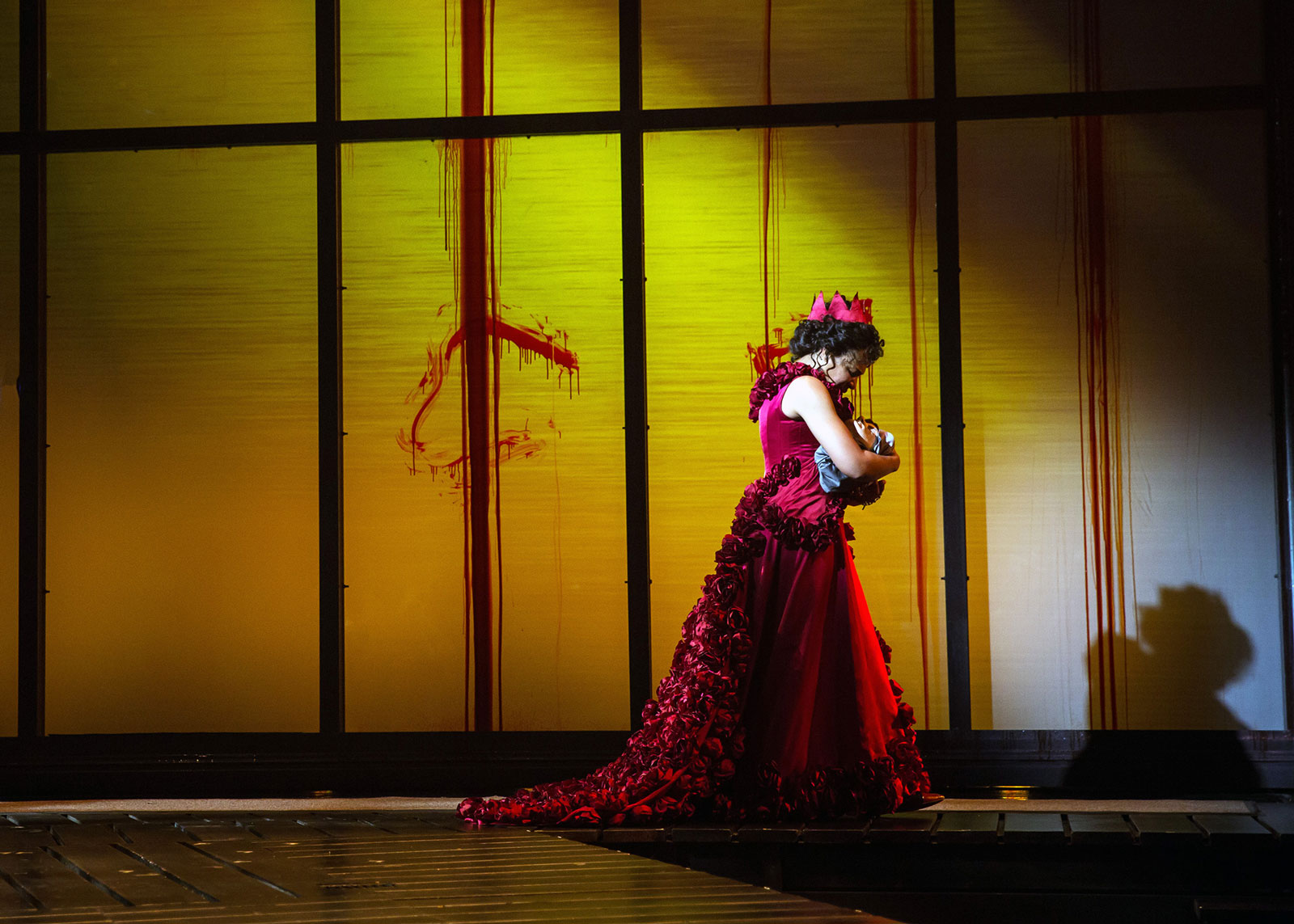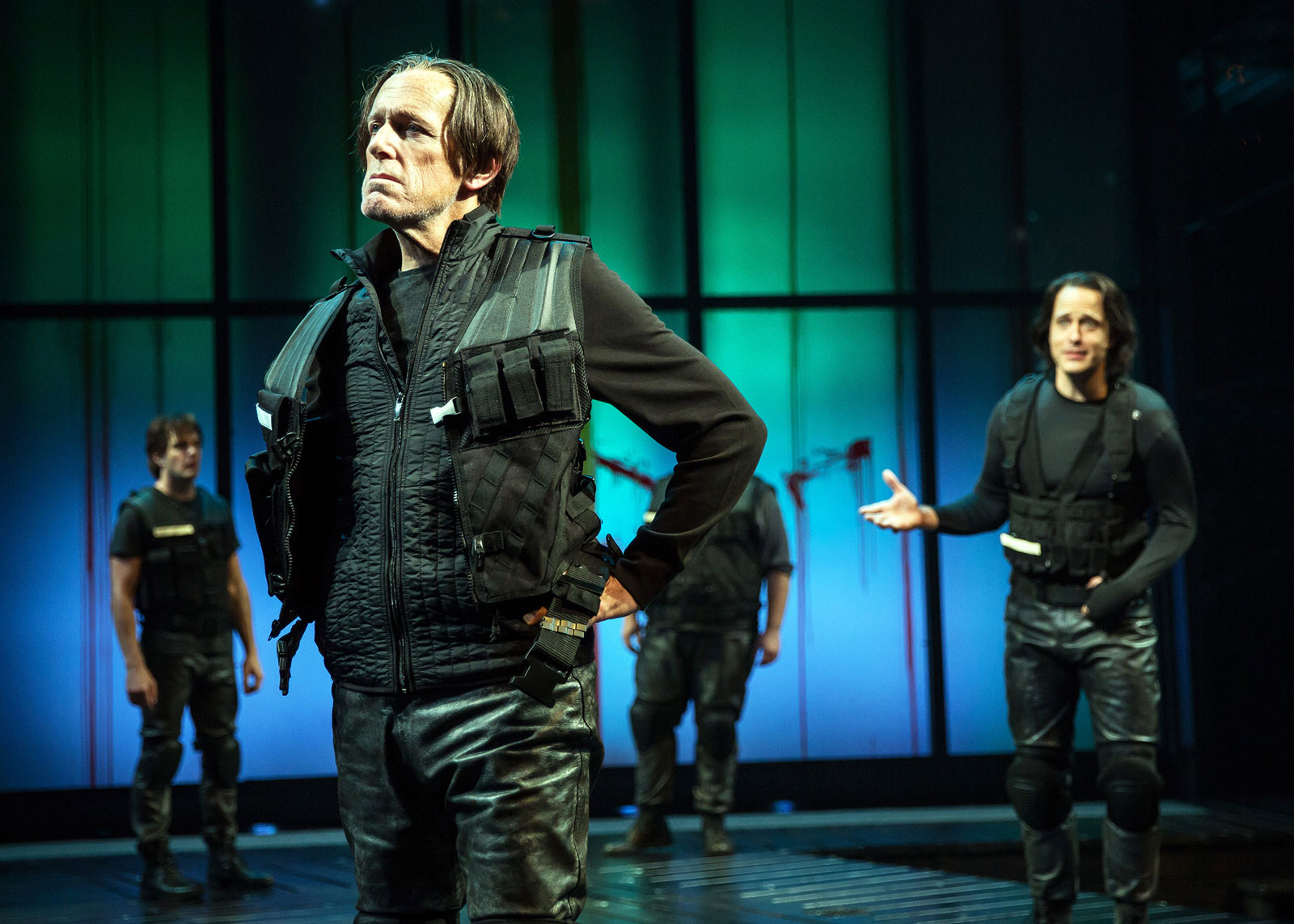Should we take our Shakespeare in a gulp or in separate driblets? There are advantages to either course. His first audience had to take him in single plays, as they were conceived and put on. But we have his large body of work, and some plays are cross-referential, especially the plays of dynastic ups and downs around the British crown. The history plays beg for some consideration as a whole, and so sequences of them are now mounted by troupes in a single season, or in weekly or daily sequence. The disadvantage of this common practice, for the two groups of four most often linked for joint consideration, is that there is no way to guarantee that the same audience will be able to attend all the separate days of performance.
In its year-long, two-part series, the Chicago Shakespeare Theater has tried to solve this problem by showing three plays in a single day (running six hours with a dinner break, the procedure followed for some lengthy Wagner operas). The normal groups of four cannot be crammed into such a program, and heavy cutting must be indulged even to get three in. The first part of the group’s history gulp, called “Foreign Fire,” was in the Spring season, giving us Edward III, Henry V, and Henry VI, Part One (reviewed in these pages last May). The second gulp, “Civil Strife,” comes now to open the Fall season, presenting Henry VI, Parts Two and Three, and the ever-popular Richard III.
Nearly all modern productions of Shakespeare cut the plays, since they are too long for performance with breaks between the acts (there was no such thing in Shakespeare’s day). What is cut reflects the company’s position on what is essential to the play—or, in this case, plays. Barbara Gaines, the founding director of the Chicago company and the primary force behind the series, is a pacifist, so she thinks the deep futility of war is the most important (and relevant) aspect of these plays. She is right to find in Shakespeare an understanding that war poisons all social relationships. The three parts of Henry VI find multiple ways to emphasize this point. These early works are still influenced by the medieval morality plays and by festival pageants as living traditions. They can be as didactic as such ethical allegories.
There is, for instance, the diptych of war miseries in Henry VI, Part Three, where a son kills his unrecognized father in battle and a father kills his unrecognized son. You could not say more directly that wars kill blindly, and Shakespeare says it over and over. Each killer laments, in traded verses from opposite sides of the stage, how unnatural it is that old men kill youth, and young men kill their elders in what Clausewitz calls the fog of war and Gaines sees as the total eclipse of morality in war. If she is belaboring a point, it is one Shakespeare himself belabored thoroughly. Her staging of this scene is brilliant. It is preceded by King Henry VI’s famous pastorale, in which he wishes that his cares as a king (cares he has neglected, helping bring on this battle) could be exchanged for the carefree life of his subjects. He delivers this long daydream from a “molehill,” and then looks down on the father and son lamenting their respective parricide and filicide. Gaines has him exit after his speech then come creeping back to the scene from below—in effect, joining the audience to see how little his subjects live the carefree lives of his dreamy speech.
Gaines’s compression of the plays puts even more emphasis on the war theme. The difficulty with this is that the dynastic rivalries and alternations in power involve repeated genealogies of the royal claimants. They are there in the uncut plays, but they do not come up in such rapid succession, creating a fog of story. Besides, cutting things not obviously related to war means omitting events that step away from the story to look at it from a different angle. That is especially true of three things omitted:
- 1. The comic “duel” of an armorer and his apprentice. Two commoners are arguing rival claims to the crown (which they are not supposed to do at all). When “the good Duke Humphrey” suggests that they settle the matter with a duel, King Henry allows this to go forward with comic weapons and knock-down farce. The king breaks all the rules of chivalry, which limited dueling to well-born combatants and special rules. In letting this little “war” go forward the king is signaling his irresponsible responsibility for the deadly war to follow.
- 2. Duke Humphrey’s wife, Eleanor, consulting a witch, Margery Jourdain, to foretell the royal succession (a thing against the law). When Eleanor is convicted of witchcraft, this helps Humphrey’s enemies bring him down. This is as little ancillary to the play’s main point as the three witches are to the plot of Macbeth. The witches are infernal signposts to the witch element in Lady Macbeth, and Margery Jourdain is the supernal sign for Queen Margaret, who schemes at murder and lives to curse all the other cursing women in the play.
- 3. The rebellion of Jack Cade. Gaines keeps this “Lord of Misrule” event in the play, but cuts it drastically, including the important trial of the virtuous Lord Saye by the raucous mob. Cade puts Saye’s head on a pole so he can make it kiss the heads of other nobles unjustly executed. Gaines lets Cade voice the famous line spoken by the most vicious of the rebels, a butcher: “The first thing we do, let’s kill all the lawyers.” Since Cade is a showman who celebrates ignorance, issues endless boasts and threats, and charms his rabid followers, Gaines gives him an orange wig. This may seem to go too far but for the fact that Cade’s authentic words are so close to Trump’s bluster. And we should remember that Cade was probably played by the famous clown Will Kemp. Despite this comic aspect of the scene, Cade is also an avatar of Richard III, who will lie and scheme and charm in ways that succeed far beyond the prophetic activity of Cade, confirming the idea that if Cade is a Lord of Misrule from medieval carnival, Richard is the Vice of morality plays. Devils can be devilish witty.
Though much that is close to essential has been omitted here, what is retained is done with great energy and polish, especially the Richard of Timothy Edward Kane. A gain for understanding Richard is that we see him in different contexts in the Henry VI plays—as a son and brother, selectively loyal, not entirely treacherous, surviving and rising above vicious partisan quarrels. Kane is not entirely treacherous. A Richard rising from this muck of furious ambitions is more understandable. It may take a monster to survive and (briefly) thrive in such madness. He has a further reason to rage at and through the sick culture of war—resentment at his deformity.
Advertisement
This theme, formulated by Freud, is made visible by the way Richard winces at any touching of his humped back. He does so when his brother Clarence hugs him—showing how affection itself hurts. In the famous seduction of Anne at the burial of her husband (killed by Richard), Kane collapses in sobs at her feet, and she touches the hump tenderly. But he rejects pity as well as scorn. When his own mother reviles him, she pounds on the hump as Richard cowers. Richard is in time isolated from all humanity, which makes him begin to scurry around his delusive throne like a trapped and lonely animal.
After Richard is killed by Richmond at Bosworth Field, we may wonder what can put together again a world so fragmented by war upon war. To address this, Gaines plays a card she takes from Hamlet, who put on his didactic play (“The Mouse Trap”) with a dumb show to begin and a jig to follow. The Chicago production begins with a young commoner, stiff in his new uniform, leaving a girlfriend who tries to hold him back from war. The soldier (named in the credits “Peter,” perhaps as a tribute to the apprentice in the omitted mock duel) shows up throughout the plays to run errands or report offstage events. But at the show’s end he comes back in a wheelchair, both his legs missing. When his girlfriend, in pity, reaches tenderly out to his stumps, he waves her away, then pounds the stumps in agony. But when a fellow veteran approaches him, he is welcomed. Other veterans file out and form a protective ring around the two.
Since Gaines the pacifist does not show weapons or blood in the conflicts on stage, characters are stabbed with invisible knives or blown over by explosions. Rather, as the killings begin, a blood-red trickle runs down the glass back wall of the set. As the killings occur in a quickening pace, multiple rivulets run and ramify. By the end of the plays, the entire wall is mass of deep red. But when the veterans turn and face the wall, they salute the blood and the back wall is cleared of it. Those who suffered without guilt are innocent of the blood taken from them. Theirs is the only honor left the nation—and this makes up the “jig” of Hamlet’s play.
“Civil Strife,” Barbara Gaines’s day-long production of Shakespeare’s Henry VI, Parts Two and Three, and Richard III, runs at the Chicago Shakespeare Theater through October 9. Her earlier sequence of history plays, “Foreign Fire,” ran last spring.




